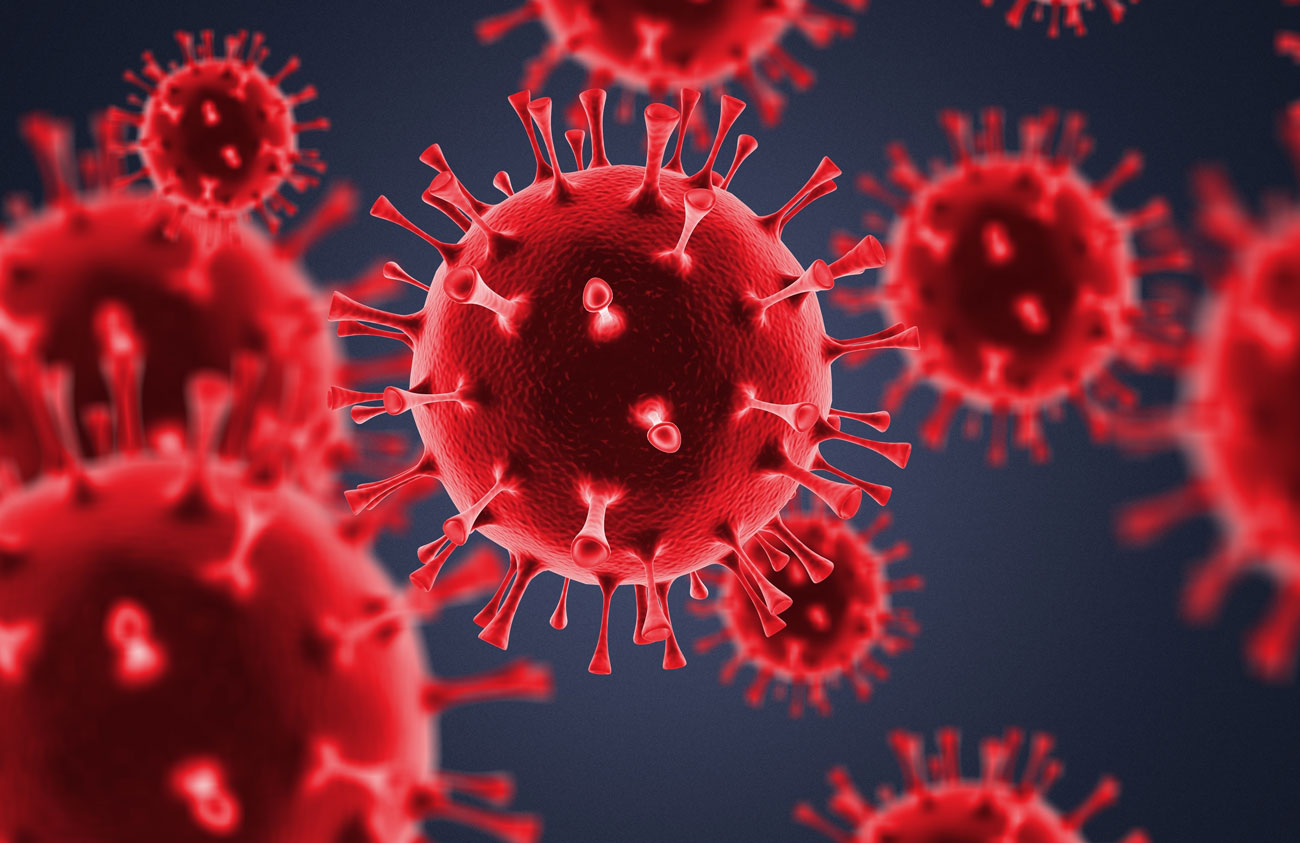The new treatment, developed by Avalo Therapeutics with Sanford Burnham Prebys researchers, can mitigate lung damage and improve survival in COVID patients.
In a phase 2 clinical trial conducted by Avalo and supported by Sanford Burnham Prebys, a significantly higher proportion of hospitalized patients with COVID-19 remained alive and free of respiratory failure for 28 days after receiving treatment with the new antibody, called CERC-002. Unlike other experimental COVID therapies, CERC-002 does not target the virus itself, instead targeting the immune response associated with the virus to stop the disease from progressing before it becomes fatal.
“At the beginning of the pandemic we thought vaccines were going to be all we really needed. But with variants like omicron, we’re going to have more people that progress to serious illness even with the vaccine,” says study coauthor Carl F. Ware, PhD, director of the Infectious and Inflammatory Diseases Center at Sanford Burnham Prebys. “We need treatments to stop the progression to severe disease and death.”
The findings were published December 6 in the Journal of Clinical Investigation.
COVID-19: a continuing crisis
In the United States, over 840,000 people have died from COVID-19. A large proportion of these deaths have been among the elderly or those who are immunocompromised due to a preexisting condition. And while three quarters of the population has received at least one dose of the COVID-19 vaccine, many remain unvaccinated.
“A lot of us feel safer now that we’ve gotten our shots,” Ware says, “but the threat of the pandemic has not gone away, even for vaccinated people.”
Most people with COVID-19 experience few to no symptoms. However, elderly individuals, people with a concurrent health condition or those who are immunocompromised are susceptible to a condition called cytokine storm, in which their own immune molecules called cytokines flood the body in higher concentrations than usual.
Rather than helping fight the virus, these extra immune molecules wreak havoc, causing patients to develop the deadly respiratory failure characteristic of severe COVID disease.
“The COVID virus gets the immune system amped up by producing these molecules, which is normally how the immune system fights diseases,” says Ware. “But when there are too many cytokines and they’re not doing their job, it can lead to severe damage.”
Neutralizing the cytokine storm
The new treatment, CERC-002, is a cytokine neutralizer—an immune molecule that recognizes and deactivates a cytokine known as LIGHT, which is elevated in patients with COVID-19. Cytokine neutralization drugs are currently being tested in the clinic, but they are mainly effective in severely ill patients who are already on a ventilator or other organ support.
“There is a critical need for drugs to stop milder cases from progressing to severe,” says Ware. “This treatment targets the cytokine immune response early enough to stop it in its tracks, which no other treatment does right now.”
83 COVID patients were enrolled in the study, half receiving the treatment, and half receiving a placebo. All patients were hospitalized with mild-to-moderate respiratory distress and were also receiving standard-of-care therapy during the trial.
They found that 83.9% of patients who received a dose of CERC-002 on top of standard of care remained alive and free from respiratory distress for 28 days. For patients receiving placebo, the number was only 64.5%.
Looking ahead
As a phase 2 clinical trial, the purpose of this study was to test whether the compound has therapeutic potential in a small number of patients. Now that the drug has proven successful at a small scale, it can be tested on a larger number of patients to ensure its benefits are consistent across the population.
Additionally, because CEC-002 targets the immune response in COVID cases rather than the virus itself, the compound may have applications that extend beyond COVID.
“Cytokine storm is not unique to COVID. It occurs in other infections—even in autoimmune diseases with no active infection, so this treatment may have some utility in these other diseases as well.”
While there is more work to be done before CERC-002 becomes widely available, it does offer a glimmer of hope during a pandemic that seems never-ending.
“We have made a lot of progress in controlling the pandemic with vaccines and other new therapies, but it’s not over yet,” says Ware. “Treatments like this may bring physicians an option to protect infected people from severe illness.
